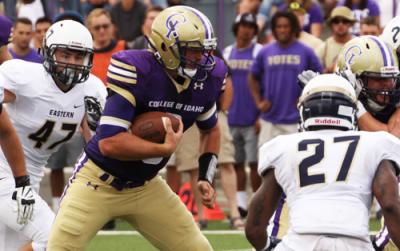


The National Association of Intercollegiate Athletics (NAIA) is a governing body of small athletics programs that are dedicated to character-driven intercollegiate athletics. The NAIA, headquartered in Kansas City, Missouri, has a membership that includes more than 260 colleges, universities and conferences. It represents 60,000 student-athletes who are engaged in 17 sports and 23 national championships and supplies $500 million in athletic scholarships.
In addition, the NAIA is strongly committed to emphasizing the character-building aspects of sport. Through its Champions of Character program, the NAIA seeks to create an environment in which every student-athlete, coach, official and spectator is committed to the true spirit of competition through five core values: Integrity, Respect, Responsibility, Sportsmanship and Servant Leadership.
Sports Destination Management: Is NAIA made up of any specific type of colleges?
Lynn Meredith: Our membership is predominantly private colleges and they are all over the country.
 SDM: Is the membership increasing?
SDM: Is the membership increasing?
Meredith: Yes – it is growing. We increase between six to 10 schools per year.
SDM: The organization offers a number of sports. Has that been growing as well?
Dustin Wilke: Yes – in addition to our 23 sports, we recognize emerging sports. They include competitive cheer and dance, which may become a championship sport as soon as next year. By the way, we are the first college association to make competitive cheer and dance a championship sport. No other sports association does that.
Men’s volleyball will probably become a championship sport two years from now. Lacrosse – men’s and women’s – is another one. Our first national invitationals will be held next year, and within the next few years, that could become a championship sport as well. We’re also watching the growth of men’s and women’s bowling – over 40 institutions are offering it now, and it has the potential to be a championship sport in the next couple of years.
SDM: How does NAIA go about the process of choosing locations for its championships?
Wilke: We invite cities to bid by posting the note on our website, www.naia.org, and we also market through a number of other websites. We attend trade association meetings and conventions as well. From there, we have what is the typical review process: evaluate each bid, conduct a phone visit and a site visit, depending. We typically like to have sites selected no less than one year in advance of each championship.
SDM: What are you looking for?
Wilke: Each sport has boxes we need to check regarding the facilities and so on. Of course, we’re also looking for things like hotels and restaurants, the ancillary things people need.
Meredith: What we’re looking for more than anything else is a site that will provide our student athletes with a top-level experience from the time they get off the plane in the city until the time they are headed back home. We want them to remember this for the rest of their lives.
SDM: Does NAIA organize club or rec sports at the colleges that are members?
 Meredith: Our institutions do have club sports at different levels, but we don’t work directly with them. However, we do have a committee that is exploring where NAIA should be looking to grow over the next decade. We’re looking into what competitive endeavors students are interested in. Sometimes, people think college athletics has to be centered around a court or a field, but we’re trying to expand that as younger generations come up. We’re exploring whether we should go into non-traditional areas. For example, we have four schools who are very involved in e-gaming. We really do want to encourage the growth of some of the lesser-known sports and have them grow to the threshold where our office is able to recognize them.
Meredith: Our institutions do have club sports at different levels, but we don’t work directly with them. However, we do have a committee that is exploring where NAIA should be looking to grow over the next decade. We’re looking into what competitive endeavors students are interested in. Sometimes, people think college athletics has to be centered around a court or a field, but we’re trying to expand that as younger generations come up. We’re exploring whether we should go into non-traditional areas. For example, we have four schools who are very involved in e-gaming. We really do want to encourage the growth of some of the lesser-known sports and have them grow to the threshold where our office is able to recognize them.
SDM: NAIA very strongly promotes its Champions of Character program.
Meredith: Character is very important to us. What hits the news about college student athletes is usually something that happens when there is a lack of character in a major college. We really are about the student athletes. We have mandatory character training for coaches and players, with character  expectations on and off field. What we need to let people know is that there are seven million people who will go on from high school to play in college. Only a small percentage of them will go on to play in Division I. What we try to emphasize to our student athletes is to get an education and continue to play the sport you are driven to play, but to do it with character. That’s what we think of as a true student athlete.
expectations on and off field. What we need to let people know is that there are seven million people who will go on from high school to play in college. Only a small percentage of them will go on to play in Division I. What we try to emphasize to our student athletes is to get an education and continue to play the sport you are driven to play, but to do it with character. That’s what we think of as a true student athlete.



